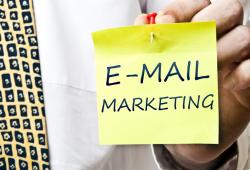Social pressure, driven by movements like Me Too, has led major brands to transform their advertising approaches and place feminism at the forefront. One might recall groundbreaking campaigns such as Dove’s, where, for the first time, women of all shapes and colors broke free from the aesthetic norms still imposed by most brands.
According to the “Meaningful Women” study conducted by Havas Media Group and IMOP Insights, published this year, which analyzed 20,000 ad creatives and included a survey of 2,000 women, 88% of these works still display slim and young bodies, while only 12% feature diverse body types (including more weight or graying hair). However, the same study also notes a move toward gender balance in ads. In 58% of the analyzed campaigns, women are depicted working and enjoying leisure compared to 24% where they are shown performing household chores or caregiving.
In light of this data, can we genuinely say that advertising can be feminist? “It’s a difficult question to answer,” admits María Isabel Menéndez, professor of Audiovisual Communication and Advertising and author of the book “Can Advertising Be Feminist?” (UOC Editorial). For Menéndez, there’s a debate that raises doubts about the sincerity of brands when they champion social causes because it’s nearly impossible to discern their true motivations. On the other hand, numerous critics argue that a feminist discourse can never exist in a market context.
What is clear, however, are the elements a campaign must embody to be feminist or, as it’s known in advertising jargon, femvertising. “It has to abandon sexist stereotypes, not degrade women or female culture, and should promote autonomy, self-esteem, or confidence in consumers,” the author emphasizes. In essence, she concludes, it’s what we commonly refer to today as women’s empowerment.
The sectors that have predominantly embraced femvertising so far are those whose primary clientele is women, such as fashion, cosmetics, hygiene products, or food. “Now we’re beginning to see others that are also opting for it, like the automotive, technology, banking, and sports sectors,” note the book’s author and Neus Soler, a collaborating professor at the UOC’s Studies of Economics and Business and a researcher at the i2TIC group. She recalls an Audi ad that celebrated women’s right to drive in Saudi Arabia.
False Flag?
Nevertheless, it remains a mystery whether these brand initiatives genuinely reflect a commitment to equality as part of their brand identity. “In any case, to avoid a reputation crisis, they would have to engage in femvertising only if they genuinely believe in it,” Menéndez cautions. According to Professor Neus Soler, many companies do it solely for marketing:
“Their everyday practices reveal their lack of gender equality.”
Nike is one of these companies, “which promotes feminism in its campaigns but doesn’t hesitate to lower sponsorship contract terms for athletes who become pregnant, as they themselves have reported on several occasions,” she notes. However, Soler also emphasizes that it’s not a general rule and points out that in Spain, a cluster of companies was created specifically to work toward a more equal society.
In fact, this type of false-flag feminist advertising also has a name – it’s called feminiwashing or purplewashing. “It’s a synonym for violet washing and takes inspiration from other better-known labels like greenwashing, which is used to denounce false ecological flag-bearing,” explains Menéndez.
To address the issue between feminist advertising and advertising that pretends to be feminist, Menéndez proposes what she has coined as “profem.” “It’s advertising that generates feminism, allowing for discussion and reflection on equality, which, for me, is what truly matters,” she points out.
But does feminist advertising truly impact the end consumer? The author acknowledges that few studies have been conducted on this topic: “These studies indicate that this type of advertising is well-received by consumers because they are tired of sexist advertising and gender stereotypes,” she comments. Nonetheless, based on the “Meaningful Women” study, it seems that women may have to wait a few more years for this sexism to disappear.
*This is a translation of an original article from Universitat Oberta de Catalunya.












